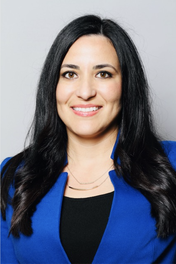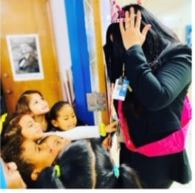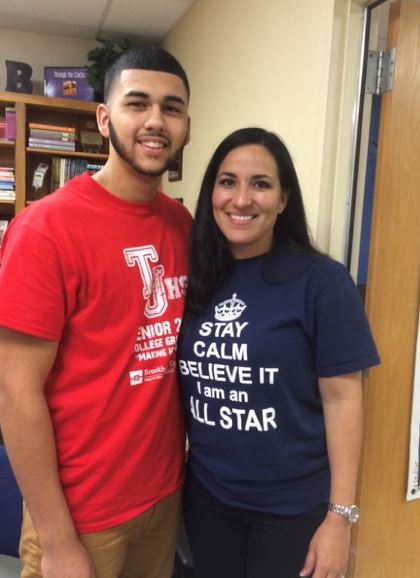 Written by Rachel Chewakin This story spotlights a conversation moderated by PIC team member Rachel Chewakin and highlights the importance of leading with empathy. Sonia Loskot also offers three insights for leading for impact. Leading with purpose Growing up in Belize with a family community deeply rooted in traditions of her grandfather’s Czechoslovakian roots and her grandmother’s Lebanese traditions, Sonia Loskot was surrounded by a cultural melting pot. Reflecting on her background and the most influential pieces of her upbringing, Loskot shared, “I’ve always been curious of different cultures and nationalities. I have appreciated everything those around me have brought to my life.” With a strong family foundation from an early age, Loskot knew that she would go to college, despite the curve balls life threw at her, and that more than anything, she needed to be educated. In her current role as Principal of Dallas Independent School District’s (Dallas ISD) Burnet Elementary School, she leads with that experience in mind to celebrate her student’s unique backgrounds. As she reflects on her students with diverse experiences, Loskot shared, “I always remember the stories of my family and how proud they were of their languages and culture. Therefore, I think of my students in the same context. We have to appreciate who our students are and then grow them as leaders.” As a leader driven by her educational experiences, she has set a vision for her campus with the core belief that students should be encouraged and empowered to be active members of the school community and advocate for themselves. Leading confidently in her identity, Loskot reflected, “As I lead, I try to show others that this is who I am, these are my core values, and this is how my values impact the work that we do at Burnet.” Leading with empathy When Loskot first arrived at Burnet Elementary eight years ago as an Assistant Principal, she was navigating one of the largest elementary schools with one of the highest poverty and highest English as a Second Language (ESL) student populations in the district. During her first few years on campus, discipline rates were very high and students were not engaged. Digging deeper into this data at the time, Loskot first paused and looked back to her own childhood. She shared, “I realized that with each student and their different levels of discipline, I was reminded of myself or my siblings growing up. What resonates is when a student is quiet, like me, they probably felt their voice was taken away. Or when a student who is fighting, there must be something deeper going on that we don’t know.” Encouraged by these reflections, Loskot was determined to build relationships with students to better understand their needs. She began to share her own story and the lessons she learned navigating the educational system as a child and adult. One value she shares with them that still holds true to her today is that, “Education is the best weapon to really conquer everything. It will fight poverty, it will give students more opportunities in life—not only financially, but more opportunities to better themselves and their families, to see the world in various contexts, travel even if they can’t leave the country, and it undoubtedly provides a sense of pride.” By leading transparently with this belief, Loskot began to see a shift in student engagement and their sense of empowerment. Students at Burnet are confident in sharing their feelings, in approaching adults on campus and seeking support when needed, and communicating in meaningful ways. This is evident from when you walk in the building and observe student discussion during circle time in classrooms to reading survey feedback from students and seeing strong handshakes between students and teachers. Reflecting on Burnet’s progress, Loskot stated, “I know these experiences really have a lot to do with empathy and engagement. I recall in PIC talking about students who were the extreme users, those who would be considered behaviorally challenged, and really needed to consider what they are feeling and thinking. Sometimes it takes that one conversation to really make that student engage with you and want to change the world for others knowing that they are changing it for themselves.” Given this shift in approaching problem solving from a human-centered lens, Loskot also shared, “Last year and this year, we did not have any discipline-related concerns. Student retention has also spoke volumes to the work that is being done at Burnet and that the students have found value within the campus space even among having other educational options.” Leading with compassion As a key part of empathizing with her students and designing a space to support their social-emotional needs, Loskot also intentionally supported and listened to her staff through the process. This could be seen in the way Burnet modeled and implemented blocked scheduling to be able to include a circle time at the beginning and end of the class. As a spark learned from her time in PIC, the campus uses chimes as a mindfulness activity to support de-escalation and self-regulation. Loskot elaborated, “During my time with PIC, I truly connected with our Circle Time: Morning and Closing Circles, my peer principal’s projects which focused on social emotional learning, and my own project: Engaging and Relating with students. From these experiences we have begun implementing similar practices we learned at PIC, such as celebrating and sharing love with others in the circle, which challenges our educators to engage from a place of empathy in which everyone comes out of the group happy despite current pressures of in-person and distance learning.” Since beginning the new mindfulness strategy, Loskot shared, “Starting with SEL really engaged our staff and has since transferred to the classroom. The teachers started to realize the approach was working and it allowed them to connect with each student’s story on a much deeper level. I also noticed an increase in their energy levels and noticed that the trickledown effect is impactful - the more we practice with teachers, the more we find how adults need these practices as much as students.” She continued to share, “If the adults are not okay, and we don’t teach them these practices to self-regulate and be aware of how they are feeling, the students won’t be able to fully engaged and build that relationship. We celebrate when we see teachers’ engaging with students. It is amazing to see how the transformation has happened on campus.” An incredible accomplishment impacted by leaning in to the human-centered approach of problem solving and building relationships has drastically changed Burnet since Loskot started there eight years ago. Not only has Burnet seen a consistent student enrollment, increased student engagement and developed a strong mindfulness practice on campus, the campus has also retained 100% of their teachers for the last two years. Looking ahead and three insights for leading for impact As a leader seeing the positive impact of leading with purpose, empathy and compassion, even in the midst of navigating a global pandemic, Loskot shares advice for other leaders designing environments that support students and staff through a new perspective. First, Loskot shares, “My advice to new principals and leaders entering the field is that you have to care about yourself. Find time to block your schedules and include time for yourselves. If you don’t have on your oxygen mask, you cannot save anyone else. While everyone relies heavily on you, you must realize you are the only principal of the school.” Loskot shares the impact PIC played on her leadership in a pivotal moment in her princpalship. “If I didn’t join PIC at the time that I did, I probably would have chosen something different to do with my career path. When I joined, I was three years into being a principal and was burned out.” And because of the intentional tools to focus on her wellbeing, she persisted. Second, she shares the importance of building a culture of trust, especially during times of change and crisis. Loskot shares, “If trust is established and if your staff believes in you, they understand that you are doing everything in their best interest and that your decisions are sensible, they will rise to the occasion even during a pandemic. But in order to do that, you have to have tools in your box.” She continues to share a tool helpful for her as she navigates building trust while moving work forward in meaningful ways. “I remember various trainings with PIC including the victim, rescuer, and accuser triangle which reminded me that if you don’t have tools in your toolbox, critical conversations may become more of a “punch in the gut” feeling because you were unable to truly support anyone or build trust from a place of wholeness,” she shares. “We became leaders because we wanted to support teachers who in turn support students and provide enhanced educational experiences. Empathy interviews and intentionally gaining the opinions of others is also key to gaining trust.” Lastly, she encourages leaders to be intentional about the essential relationships they have with their staff and their team, and how to be intentional about retaining them. She shares, “Leaders have to make the time to invest in their teachers and teams to continue to push them forward without producing an environment in which they break. Being able to lean into trust while also leading with empathy is crucial for everything else to fall in place and for results to happen.”
0 Comments
Your comment will be posted after it is approved.
Leave a Reply. |
Categories
All
Blog Archives
March 2023
|
© COPYRIGHT 2020. ALL RIGHTS RESERVED.



 RSS Feed
RSS Feed